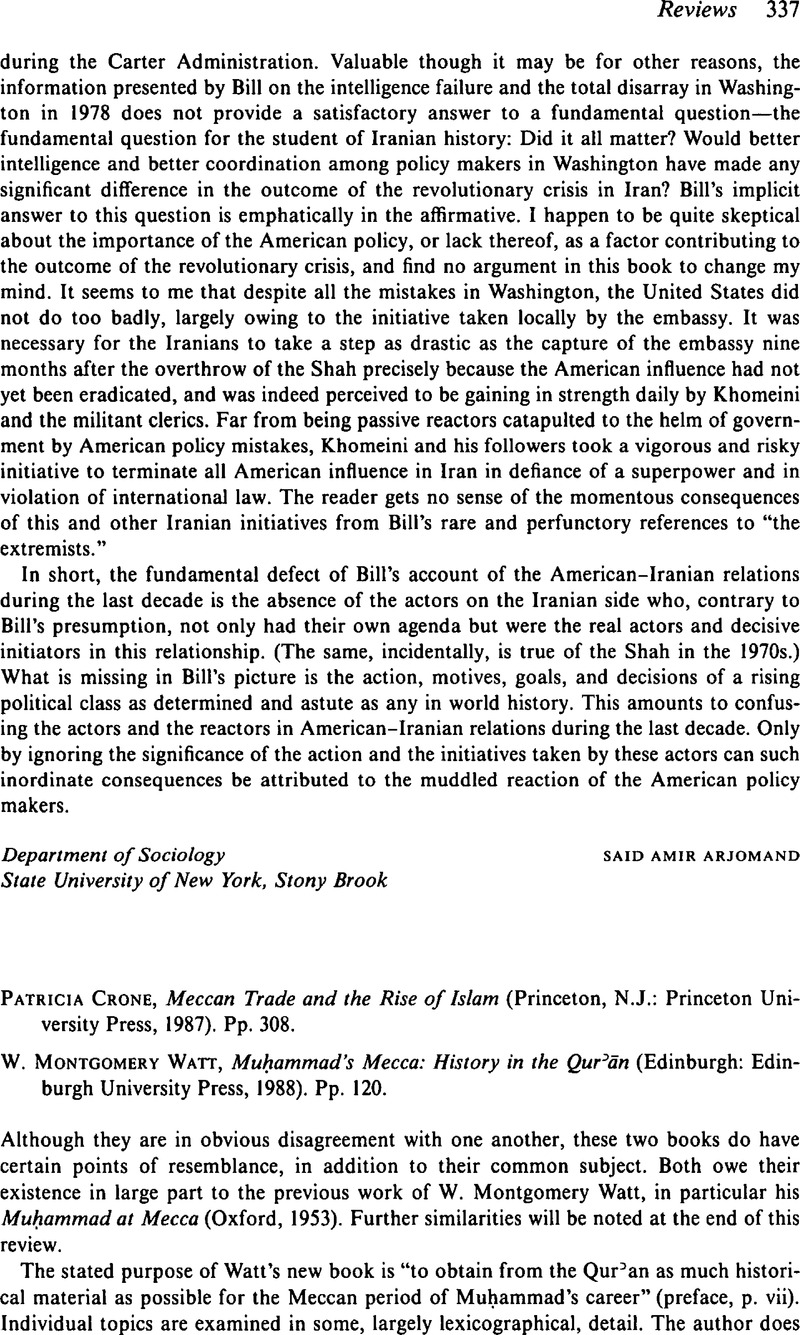No CrossRef data available.
Article contents
Patricia Crone, Meccan Trade and the Rise of Islam (Princeton, N.J.: Princeton University Press, 1987). Pp. 308. - W. Montgomery Watt, Muḥammad's Mecca: History in the Qurʾān (Edinburgh: Edinburgh University Press, 1988). Pp. 120.
Published online by Cambridge University Press: 29 January 2009
Abstract

- Type
- Reviews
- Information
- Copyright
- Copyright © Cambridge University Press 1990
References
NOTES
1 For the results of such an exercise, see the book by Crone, under review here, pp. 203 f.;Google ScholarCook, M., Muhammad (Oxford, 1983), pp 69 f.Google Scholar
2 On p. 231, we are asked to consider this a “left-handed compliment for Watt,” whose name is to be taken “as shorthand for early Islamic historians in general.”
3 Crone, P. and Cook, M., Hagarism: The Making of the Islamic World (Cambridge, England, 1977), p. 3:” The Islamic sources…offer little that can be used in any decisive way to arbitrate between them. The only way out of the dilemma is thus to step outside the Islamic tradition altogether and start again.”Google Scholar
4 Crone, P., “Islam, Judeo-Christianity and Byzantine Iconoclasm,” Jerusalem Studies in Arabic and Islam, 2 (1980), 59–95.Google Scholar




